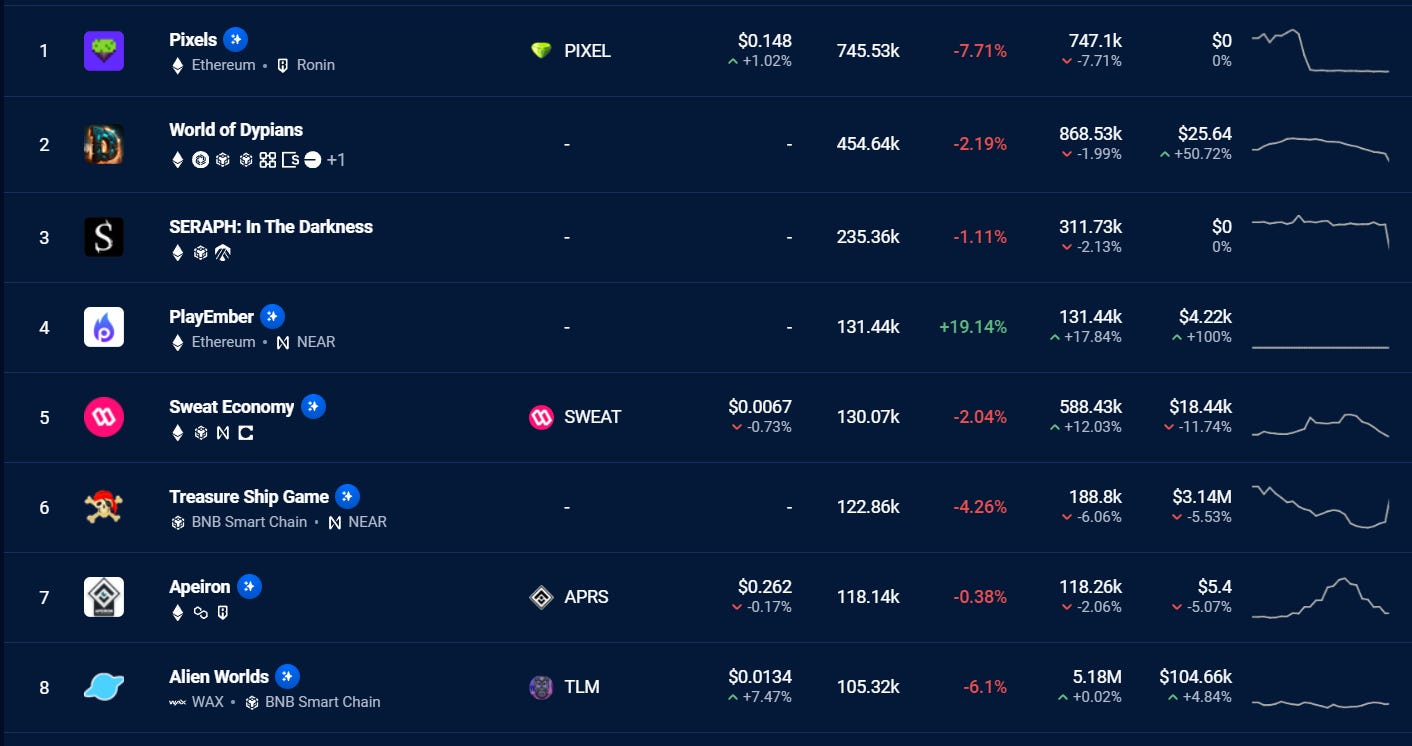Accurately Gauging the Success of Web3 Gaming
Overcoming Data Challenges and Bridging East-West Insights
This is a guest post by Schofield - follow him on Twitter and reach out if you need high-quality ghostwriting services.
Defining Success is a Challenge…
Assessing a game’s true success is challenging due to the prevalence of misleading data and artificially inflated metrics from excessive botting.
I sat down with several Wolves to discuss creative evaluation methods to cut through the noise when assessing different games from an investment standpoint.
One of the main points of contention here was the prevalence of X as a platform and how it is generally an echo chamber of the West, and how this makes it difficult to gauge activity in the East, where web3 is reportedly thriving.


Key Takeaways
Fableborne’s, Maria discusses the different standards of legitimate gaming analysis organisations who report on gaming trends, news, and updates, in web2 and web3.
The differing definitions of what “success’ means in web3 gaming from both consumer and investor perspectives.
Riptide suggests several additional metrics we can use to evaluate the success of web3 gaming more accurately.
Maria emphasizes the need for data to have context, for analysts to perform accurate hypotheses. Until we have such a link, we’ll only be making assumptions about success thus far.
Key Points Discussed
Defining success in Web3 gaming.
A data-driven approach without the data.
Success indicators we can use.
Defining Success in Web3 Gaming
Several members felt the need to define ‘success’ given the ambiguity with many Wolves providing distinct definitions with common underlying themes.
IcoBeast described success from a consumer’s perspective as fun gameplay regardless of token price, and from a trader’s perspective, price appreciation and value accrual.
Tcaff on the other hand focused more on the notion of expected rewards and compared the current speculative era to a future gameplay-focused era. Other members also touched on the idea of vanishing distinctions between web2 and web3 gaming with all web3 games being referred to as just ‘games.’
Based on these opinions an underlying definition of the success of a web3 game goes beyond just gameplay, but a combination of fun and expected rewards. The game needs to not only be fun, but players need to believe in the idea that they can earn rewards from the game to continue playing it, even if the chances are slim.
Now that we have our definition, how can we accurately gauge success using models beyond UAW on DappRadar?

Data Metrics for Measuring Success.
WolvesDAO members, including StoicJay, Riptide, and Blitz instead suggested that measuring the success of a game should be based on metrics such as:
Average playtime and depth beyond the core loop.
Revenue.
Concurrent players.
Value of daily, weekly, and monthly purchases from in-game items.
Number of live spectators.
Session length.
Maria added to this by outlining, that, unlike web2, web3 doesn’t have established companies who report on this data, with web2 having several consultancy analysts such as Deconstructor of Fun and Two & a Half Gamers who share deeper insights. Furthermore, we have other companies like Niko Partners who offer a similar service while specializing in the East in addition to insight platforms such as Newzoo, Liquid and Grit, and Game Refinery.
There are clearly several, reliable consultancy and analytics organisation that can help individuals and businesses gauge the success of web2 gaming, which web3 simply does not have. A perfect scenario would be if these platforms began to expand their services to include data from web3 games, however, it is unlikely that this will happen anytime soon.
Until then we have to take all self-reported data with a grain of salt, especially with announcements from games such as Hamster Kombat reporting over 100 million players.
Even if this was true, we know that the vast majority of these ‘users’ are bots or this is just an outright miscalculation. Not to mention a number of the other viewable metrics such as YouTube subscribers and X followers don’t merit any value because players are only incentivized to do so to earn in-game rewards, vastly inflating those metrics too.

This highlights the need for formal industry analysis in web3 gaming and also displays the importance of context in data interpretation.
Other Indicators of Web3 Gaming Success
Instead of relying on metrics that can be cheaply manipulated, how can we accurately gauge success in the east with available data?
Some creative techniques put forward by, Riptide include content creator and streamer engagement on platforms such as YouTube, Twitch, Farcaster and SankoTV. If Twitch streamers who have garnered audiences for video game content, begin to play a web3 game and it gets several views, it means that the game is starting to spread among web2 audiences. Plus the reason they would have streamed in the first place was because it was either:
A trending game at the time; or
Their audience requested for them to play it.
A good example of this is Off the Grid’s partnership with renowned streamer, Clix which has garnered over 500K views across two streams in 2023. Off the Grid is renowned for their strategy on dipping their toes into web2 by minimising web3 jargon and securning partnerships such as this one.
Another suggestion includes the price they decide to sell their game at and the number of downloads it gets as a proxy of how hyped the game is amongst users and an indication of their revenue. Moreover, the number of users who have added a given game to their wishlist on the Epic Game Store. For example, Nyan Heroes is in the “Top Upcoming Wishlisted” section on the Epic Game Store, a quantitative bullish indicator.

The final suggestion put forward by Riptide is measuring the value of daily, weekly, and monthly purchases of in-game items, which could be measured by NFT volume.
A limitation here is that not all in-game assets are on-chain tokens making it difficult to measure unless the game reports it, but an analysis of NFT sales volume, price action, and unique holders can be a great metric to consider.
In a speculative era, more like now, the sales of an NFT might not significantly reflect the value of a game’s popularity but might’ve involved other motives such as airdrop rewards.
Conclusion
In conclusion, I want to emphasize Maria’s point that until we have reputable video game analysis organisations like Deconstructor of Fun and creators like Two & a Half Gamers gauging the success of web3 gaming will be a challenge. Until then evaluating the success of gaming in the East will prove difficult.



